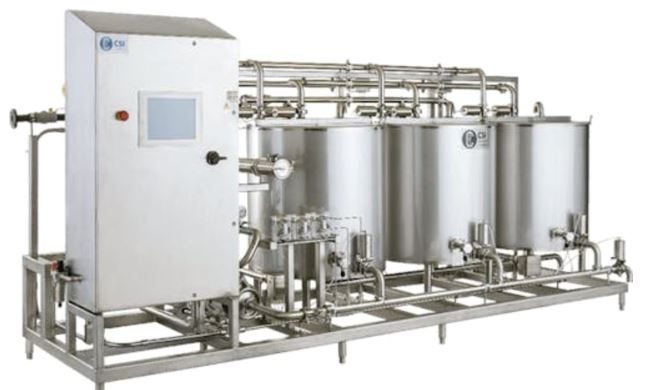Understanding Withdrawal Symptoms: What Happens During Drug Detox?
Drug detox is an essential step for individuals battling substance use disorders. It is the process where the body rids itself of toxins from prolonged drug use. However, this process can come with significant physical and psychological challenges known as withdrawal symptoms. Understanding these symptoms and what happens during drug detox can help you or your loved ones prepare for this crucial phase of recovery.
What Are Withdrawal Symptoms?
Withdrawal symptoms occur when an individual who has become physically dependent on a substance suddenly reduces or stops its use. The body has become accustomed to the presence of the drug, and when it is no longer available, the body reacts in an attempt to maintain equilibrium.
These symptoms can range from mild discomfort to severe physical and psychological distress, depending on the substance used, the duration of use, and the individual’s overall health.
Common withdrawal symptoms include:
- Nausea and vomiting
- Muscle aches and pains
- Insomnia and restlessness
- Anxiety and depression
- Irritability and mood swings
- Sweating and shaking
- Hallucinations and seizures (in severe cases)
The Stages of Drug Detox
1. Initial Stage: Acute Withdrawal
The first stage of drug detox is often the most intense. This stage typically begins within a few hours to a few days after the last dose, depending on the drug being used. The body, having become accustomed to the presence of the drug, is now in a state of shock as it adjusts to functioning without it.
2. Middle Stage: Stabilization
During the middle stage of detox, the body begins to stabilize. While the most severe withdrawal symptoms may have subsided, the individual may still experience ongoing physical and emotional discomfort. This is also the stage where the body starts repairing the damage done by long-term drug use.
3. Final Stage: Continued Recovery
The final stage of detox involves ongoing recovery as the body continues to heal. Although most of the acute withdrawal symptoms may have passed, individuals may still experience lingering effects such as fatigue, cravings, and mood swings. This phase often marks the transition from detox to a more comprehensive rehabilitation program.
Common Withdrawal Symptoms for Different Substances
Different drugs produce different withdrawal symptoms. Understanding what to expect from various substances can help individuals and families prepare for the detox process.
1. Alcohol Withdrawal
Alcohol withdrawal is one of the most dangerous forms of drug detox, and symptoms can appear within hours of the last drink.
Common alcohol withdrawal symptoms include:
- Tremors (shaking)
- Anxiety and agitation
- Sweating
- Nausea
- Hallucinations (delirium tremens)
- Seizures
Because of the severity of these symptoms, it is crucial to undergo alcohol detox in a detox treatment center where medical professionals can monitor and manage symptoms.
2. Opioid Withdrawal
Opioid withdrawal, while rarely life-threatening, can be highly uncomfortable and challenging to endure.
Common opioid withdrawal symptoms include:
- Muscle aches
- Insomnia
- Nausea and vomiting
- Runny nose
- Yawning and teary eyes
- Anxiety
Opioid detox often requires medical assistance to ease withdrawal symptoms, making a drug detox center the ideal environment for recovery.
3. Benzodiazepine Withdrawal
Withdrawal from benzodiazepines (such as Xanax or Valium) can be severe and sometimes life-threatening.
Common benzodiazepine withdrawal symptoms include:
- Tremors
- Increased heart rate
- Panic attacks
- Anxiety
- Seizures
Detoxing from benzodiazepines should always occur in a supervised environment, as the risk of seizures and other complications is high.
4. Stimulant Withdrawal
Stimulants like cocaine and methamphetamine can cause psychological withdrawal symptoms that may be difficult to manage.
Common stimulant withdrawal symptoms include:
- Fatigue
- Depression
- Suicidal thoughts
- Intense cravings
- Sleep disturbances
Stimulant withdrawal often requires a combination of psychological and medical support.
How a Drug Detox Center Helps Manage Withdrawal
Going through drug detox on your own can be extremely dangerous. A drug detox center provides a safe and supportive environment for individuals to undergo the detox process under professional supervision. These centers offer several benefits:
- Medical Supervision: Many withdrawal symptoms can be life-threatening, especially for substances like alcohol or benzodiazepines. In a detox treatment center, medical professionals can monitor vital signs, administer medication to ease symptoms, and intervene in case of an emergency.
- Medication-Assisted Treatment (MAT): Certain detox centers offer medication-assisted treatment to reduce withdrawal symptoms and cravings. MAT can help with substances like opioids, where medications such as methadone or buprenorphine can significantly reduce discomfort.
- Nutritional Support: During detox, many individuals struggle with nausea and a loss of appetite. Detox centers ensure that patients receive proper nutrition to help the body heal and regain strength.
- Emotional and Psychological Support: The mental toll of detox is significant. In a detox center, individuals have access to counselors and support groups to help them manage anxiety, depression, and cravings during the withdrawal period.
Why Choose a Luxury Drug Rehab for Detox?
While any detox treatment center can provide the necessary medical support, a luxury drug rehab offers additional benefits that can make the detox process more comfortable and less stressful.
Benefits of luxury drug rehab include:
- Comfortable, Private Accommodations: Luxury rehabs provide a comfortable and tranquil environment where individuals can focus on their recovery. Private rooms, luxurious amenities, and serene surroundings can make the detox process less intimidating.
- Personalized Care Plans: Luxury rehabs often offer more personalized care, tailoring detox and treatment plans to meet the specific needs of the individual. This ensures that the patient receives the best possible care during their detox and recovery journey.
- Holistic Therapies: Luxury drug rehabs typically offer holistic therapies, such as yoga, acupuncture, massage therapy, and meditation, to help ease the discomfort of withdrawal and promote overall well-being.
- Privacy and Confidentiality: For individuals who value discretion, luxury rehabs provide a high level of privacy and confidentiality. This is especially important for professionals or high-profile individuals who may prefer to keep their treatment private.
Conclusion
Undergoing drug detox is an essential step toward recovery, but it can also be one of the most challenging phases. Withdrawal symptoms, which vary based on the substance, can be physically and emotionally overwhelming. However, with the right support from a drug detox center or luxury drug rehab, individuals can safely manage these symptoms and begin the journey to sobriety.
Choosing professional care not only ensures safety during detox but also provides the emotional and medical support needed to navigate this difficult process. Whether you opt for a standard detox treatment center or a luxury facility, the most important thing is to seek help and take the first step toward recovery.




